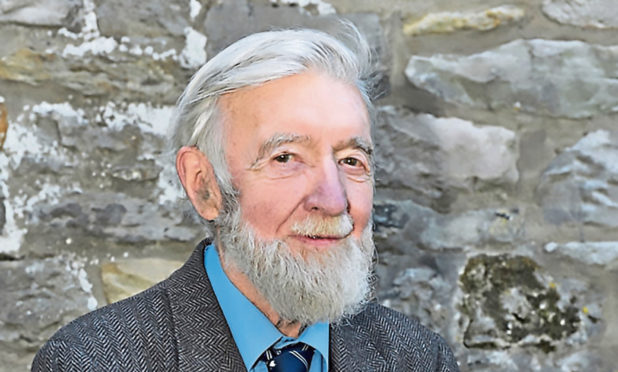As the wedding party slipped into the second day, folk were losing their grip on sanity.
Twenty-four hours of drinking and dancing and talk had left people’s minds at a midnight setting.
Yet Gaelic scholar John MacInnes was still lucid.
In his late 80s, and drink for drink as long gone as the rest of us, his mind was still at noon.
We looked out over Loch Tay and he casually recalled the names of the settlements on the southern shore, then told how he had recorded Gaelic speakers from those townships in the 1950s, and speculated on the combination of economic and social forces that left the glen so empty.
His knowledge, and astonishing recall at a moment when others were beyond sense, are things I will always remember, like the sensation of wonder a student feels in the stacks of a great library.
John MacInnes died on May 10 at the age of 89.
By rights, this should have been national news, meriting silence in the parliament and statements from the great and good.
Scotland lost the last of the great scholars – the rigorous minds who did so much to save and celebrate Gaelic and Scottish culture in the second half of the 20th Century.
We take for granted public signs in Gaelic and English, Gaelic medium schools and the legitimacy of Gaelic culture.
Yet this is largely the result of work by MacInnes and others in recognising the value of indigenous culture and the threat posed by the homogenisation of modernity.
We now have a cultural confidence, and a parliament, thanks to this renaissance in Scottish studies by MacInnes and a collection of poets, musicians and academics decades ago.
It could easily have been different.
In John’s lifespan, Scotland often looked more likely to welcome the cultural cringe, adopt a more “English” version of affairs, and willingly finish the job of erasing ourselves.
That we did not is thanks to many people – a minority in a society which had come to think of modernity as something opposite to Scotland.
MacInnes recorded the ways of a Gaeldom that was under huge stress from economic neglect, cultural oppression and demographics.
Like his near contemporary Hamish Henderson, he recorded a society that was dying out, reluctantly.
An early recruit to the School of Scottish Studies at Edinburgh University, he knew Hugh MacDiarmid and Sorley Maclean, and was great friends with Norman MacCaig.
These people kept a version of authentic Scotland alive.
I’m aware that works like “English” and authentic in this context might be read as code for non-Scots. This is not what I mean.
Instead, I am trying to describe cultural and social trends that made Scots dismissive of Scotland.
MacInnes was undoubtedly Scottish, but foremost he was a citizen of the mind, a proud intellect.
His death is equivalent to losing an encyclopaedia in an age before the internet, but greater than that, for no computer can yet make the connections between knowledge as magically as the human brain.
Which draws into focus the great change in Scottish life that has occurred, or rather, the strange death of rigorous Scotland.
In the second half of the 20th Century, Scotland reasserted a pride in education, scholarship and internationalist values.
The poets and writers and thinkers were as informed of Latin and Greek, of classical tradition, as they were of Scotland.
The cultural, intellectual and ultimately political emergence of modern Scotland came from clever people unashamed of their learning.
No doubt this was a very male world, a sexist one and politically incorrect in a way that wouldn’t stand 21st Century scrutiny, but it was not feeble minded.
There was the presumption of intellectual rigour, amidst the prodigious drinking.
This is in stark contrast to modern Scotland.
We are no longer severe in our thought and conversation.
Much greater value is put on being folksy, on being sympathetic.
This is part of a modern trend to make light of education.
The rigour, the democratic intellect of the past, seems to have given over to a Scotland that no longer rates scholarship so highly, and excuses any amount of flabby thinking as acceptable.
Our airwaves are full of bland chat, the once-great newspapers of the central belt pale shadows of their former selves, our hard won parliament almost unScottish for its lack of rigour.
The notion of Caledonian man – educated, open minded, vigorous in argument and graceful in the face of superior learning – that was concocted by the post-war scholars has disappeared.
In his, and her, place is a non-threatening, keen-to-be-liked person who shuns logical argument, rigorous examination or anything that smacks of exception.
Perhaps this was a natural evolution – a minority of scholars and sharp-minded people created the cultural and political terms that had to be softened in order to become widely accepted.
Perhaps also in the saving of Scotland, a new Scotland was inevitable – we could all be more relaxed in our Scottishness.
The last of the native scholars is gone – may the whisky flow past midnight in his memory.










